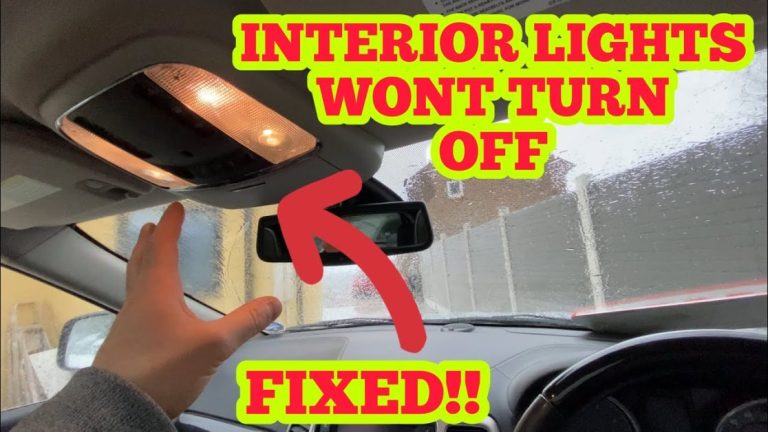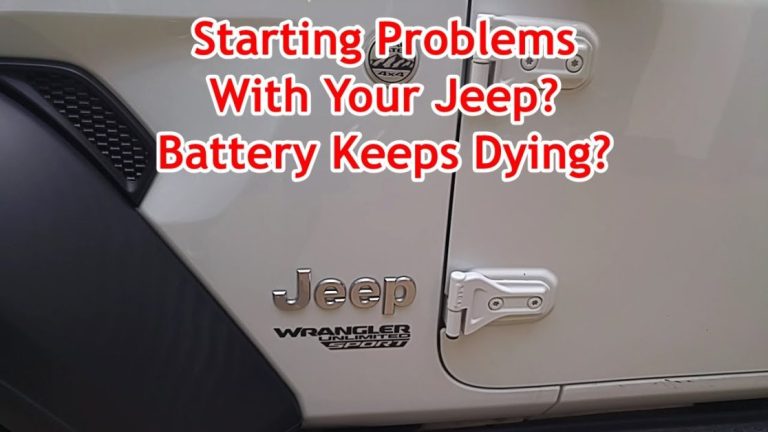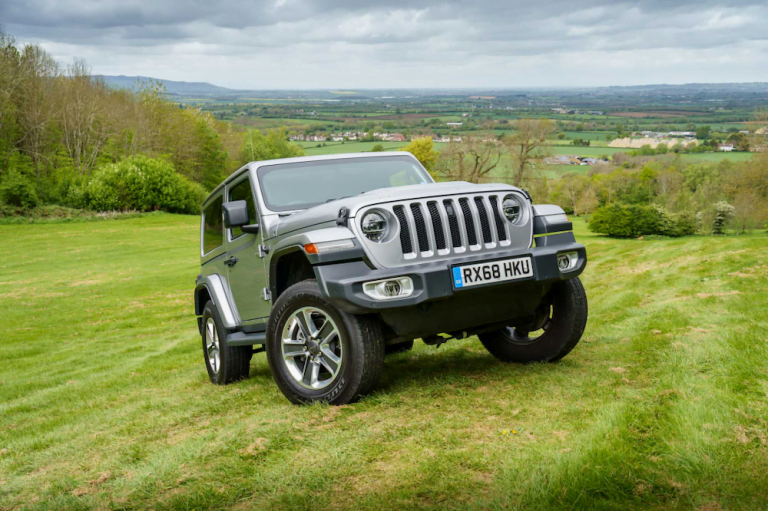What is Death Wobble on a Jeep and How?
Discover the mysterious phenomenon that strikes fear into Jeep owners everywhere – the dreaded “death wobble.” At speeds of 40-50 mph, this elusive yet treacherous front-end suspension issue can turn a smooth ride into a nightmare.
Explore the causes, solutions, and tales of conquering the Jeep’s most unsettling secret.
what is death wobble on a jeep
Death wobble on a Jeep is an uncontrollable, erratic, and undulating sensation that can occur while driving, typically when one wheel hits a bump around 40-50 mph.
It is a common issue in Jeep models with a coil-spring setup and track bar system, such as the Cherokee XJ, Grand Cherokee ZJ and WJ, and Wrangler YJ, TJ, and JK.
Causes include factors like the age and model of the Jeep, condition of steering and suspension parts, and wheel balance.
The fix involves replacing the steering stabilizer with a heavier-duty aftermarket component and checking various components like steering, alignment, tire pressure, and hub bearings.
Regular maintenance checks are essential to ensure the problem is permanently resolved.
Key Points:
- Death wobble on a Jeep is an uncontrollable and undulating sensation experienced while driving, often when one wheel encounters a bump at speeds of around 40-50 mph.
- Common in Jeep models like the Cherokee XJ, Grand Cherokee ZJ and WJ, and Wrangler YJ, TJ, and JK with a coil-spring setup and track bar system.
- Root causes include the age and model of the Jeep, condition of steering and suspension parts, and wheel balance.
- Fixing the issue involves replacing the steering stabilizer with a more robust aftermarket part and inspecting components like steering, alignment, tire pressure, and hub bearings.
- Regular maintenance checks are crucial to permanently resolve the death wobble problem.
Check this out:
1. Understanding Death Wobble In Jeeps
Death wobble is a frightening phenomenon specific to Jeep vehicles, characterized by violent shaking of the steering wheel and front end of the vehicle, feeling like it’s about to fall apart. This issue usually occurs when hitting a bump or imperfection in the road at speeds between 40 to 50 mph. Described as uncontrollable, erratic, and undulating, it is a harrowing experience for drivers. Understanding the root causes of death wobble is crucial for effective prevention and solution.
- Death wobble is a frightening phenomenon in Jeep vehicles
- Characterized by violent shaking of the steering wheel and front end
- Typically occurs at speeds of 40 to 50 mph
- Described as uncontrollable, erratic, and undulating
2. Common Misconceptions Addressed
- Death wobble is often misunderstood as a catastrophic problem with no solution.
- In reality, death wobble is treatable through proper diagnosis and maintenance.
- Not all Jeeps are prone to experiencing this issue.
- It can affect specific models and is usually linked to wear and tear on certain components.
- Addressing these misconceptions can help Jeep owners tackle the problem more effectively.
3. Treatable Nature Of Death Wobble
Contrary to popular belief, death wobble in Jeeps is a treatable issue that, when addressed promptly, can be resolved effectively. By taking the necessary steps to identify the root cause of the problem and implementing the appropriate fixes, drivers can regain control and stability in their vehicles. Understanding that death wobble is a common concern among Jeep enthusiasts, it is essential to approach the issue with a mindset focused on finding solutions rather than succumbing to fear or panic. With the right approach and expert guidance, death wobble can be remedied to ensure a safe and smooth driving experience.
- Identify the root cause of the problem
- Implement appropriate fixes
- Approach the issue with a solution-focused mindset
- Seek expert guidance when needed
“With the right approach and expert guidance, death wobble can be remedied to ensure a safe and smooth driving experience.”
4. Identifying Causes Of Death Wobble
Several factors contribute to the occurrence of death wobble in Jeeps:
- The age and model of the vehicle
- The condition of steering and suspension components
- Wheel balance
The issue typically emerges between 45 and 55 mph, indicating problems in the front end or tire-related issues. Pinpointing the exact cause of death wobble can be challenging due to the complex nature of modern drivetrain and suspension systems. Therefore, a thorough inspection and diagnosis by a qualified technician are crucial to identifying and addressing the root cause of the problem.
Remember, timely maintenance and professional assessment are key to resolving death wobble effectively.
5. Jeep Models Affected By The Issue
- Death wobble is a common concern among certain Jeep models, including the Cherokee XJ, Grand Cherokee ZJ and WJ, Wrangler YJ, TJ, and JK.
- Additionally, Ford and Dodge trucks with similar coil-spring setups and track bar systems may also experience this unsettling phenomenon.
- Recognizing the specific models that are prone to death wobble can help owners of these vehicles be more vigilant and proactive in addressing any potential issues that may arise.
6. Factors Contributing To Death Wobble
- The factors contributing to death wobble in Jeeps are multifaceted and often interrelated.
- Age and model of the Jeep, condition of steering and suspension parts, and wheel balance all play a role in the onset of this issue.
- Additionally, lifted vehicles may be more susceptible to experiencing death wobble, as altering the vehicle’s suspension can impact its stability and handling.
- It is essential to consider these factors when diagnosing and addressing death wobble to ensure a comprehensive and effective solution.
7. Emerging Problems At Specific Speeds
- Death wobble typically emerges at specific speeds, commonly between 45 and 55 mph, when one wheel hits a bump or imperfection on the road surface.
- This speed range triggers the erratic shaking and vibration in the front end of the vehicle, leading to the sensation of losing control.
- Understanding the specific speed range at which death wobble occurs can help drivers anticipate and address the issue before it escalates, ensuring a safer driving experience on the road.
8. The Fix: Replacing The Steering Stabilizer
- One common approach to addressing death wobble in Jeeps is to replace the steering stabilizer with a heavier-duty aftermarket component.
- The steering stabilizer plays a crucial role in minimizing vibrations and maintaining stability in the front end of the vehicle.
- By upgrading to a more robust stabilizer, drivers can effectively mitigate the effects of death wobble and restore control and smoothness to their driving experience.
- This fix is relatively straightforward and can make a significant difference in addressing the issue.
9. Checklist For Fixing Death Wobble
When addressing death wobble in Jeeps, it is essential to conduct a comprehensive inspection of various components to identify and resolve the root cause of the problem.
A checklist for fixing death wobble may include:
- Examining steering components
- Ensuring proper front-end alignment
- Checking tire pressure
- Inspecting hub bearings
- Considering specialized replacement parts for lifted vehicles.
By systematically evaluating these factors and making necessary adjustments, drivers can effectively address and prevent death wobble in their vehicles.
Remember, a thorough inspection and proper maintenance are key to ensuring a safe and stable driving experience.
- Examining steering components
- Ensuring proper front-end alignment
- Checking tire pressure
- Inspecting hub bearings
- Considering specialized replacement parts for lifted vehicles
10. Importance Of Follow-Up Maintenance
After implementing fixes to address death wobble in Jeeps, it is crucial to prioritize follow-up maintenance to ensure the problem is permanently resolved. Regular checks and servicing of steering and suspension components, as well as tire balance and alignment, are essential to maintaining the integrity of the fixed parts and preventing future issues. By staying proactive and vigilant about maintenance, Jeep owners can enjoy a safe and stable driving experience without the worries of death wobble resurfacing.
- Regular checks and servicing of steering and suspension components
- Tire balance and alignment are essential
- Stay proactive and vigilant about maintenance
FAQ
How do you fix death wobble in Jeeps?
To fix death wobble in Jeeps, start by thoroughly checking all steering components such as tie-rod ends, ball joints, track bar mounting, bracket bolts, steering box brace, and track bar ends for any signs of wear or looseness. Proper maintenance and replacement of these parts can help eliminate the wobble. Additionally, it is essential to inspect and adjust the front-end alignment, ensuring that the caster and toe-in are set correctly, as this can play a significant role in preventing the occurrence of death wobble. Addressing these key areas can effectively resolve the issue and help restore stability to your Jeep’s steering system.
What is the main cause of Jeep death wobble?
The main cause of Jeep death wobble often stems from worn suspension components, specifically a compromised front track bar or faulty ball joints. These parts play a crucial role in maintaining stability and smooth operation, so any wear or inefficiency in them can trigger the unsettling phenomenon. Furthermore, the use of subpar aftermarket parts that fail to deliver the same level of performance as OEM components can also contribute to the onset of the dreaded death wobble, exacerbating the instability of the vehicle.
Is it safe to drive a Jeep with death wobble?
While the Jeep death wobble may feel alarming and cause a loss of control, it is generally safe to continue driving with caution. Despite its frightening nature, there have been no reported fatalities directly caused by the Jeep death wobble. However, a few incidents have resulted in injuries and minor accidents, highlighting the importance of addressing the issue promptly to mitigate any potential risks. Overall, while driving a Jeep experiencing the death wobble, it is crucial to prioritize safety and take necessary precautions to prevent any accidents or injuries.
Is the Jeep death wobble normal?
Experiencing the Jeep death wobble is not considered normal and is a sign of underlying issues within your vehicle’s suspension or steering system. This mechanical defect can cause parts to shake violently, creating a potentially dangerous situation, especially at high speeds or on rough terrain. It is crucial to address this issue promptly to ensure your safety and prevent further damage to your Jeep.
💡 Did You Know?
1. Jeep’s “Death Wobble” phenomenon is a term used to describe a violent shaking or wobbling of the front wheels that can occur at high speeds in certain Jeep models, particularly Wranglers and Cherokees.
2. The Death Wobble is often caused by a combination of worn-out or damaged steering and suspension components, such as track bars, tie rods, or ball joints.
3. The Death Wobble can be triggered by hitting a bump or pothole while driving at high speeds, causing the front wheels to oscillate uncontrollably.
4. Some Jeep owners have reported experiencing the Death Wobble even after replacing multiple parts, highlighting the complex and sometimes elusive nature of its root cause.
5. Proper maintenance, regular inspections, and upgrades to stronger aftermarket components can help prevent or mitigate the risk of Death Wobble in Jeeps.



